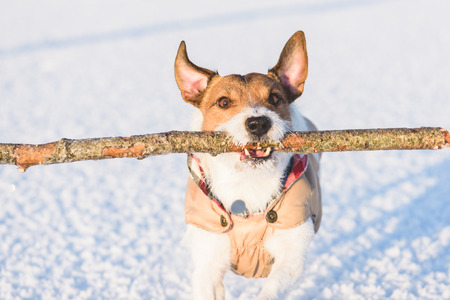1. Understanding Seasonal Grooming Needs
As the seasons change, so do your pet’s grooming needs. Temperature, humidity, and environmental factors can all impact your pet’s coat, skin, and overall well-being. By adjusting your grooming routine accordingly, you can help keep your furry friend comfortable and healthy year-round.
How Weather Affects Your Pet’s Coat
Your pet’s coat naturally adapts to seasonal changes, but it still requires proper care to stay in top condition. Here’s how different weather conditions impact your pet:
| Season | Coat Changes | Grooming Considerations |
|---|---|---|
| Summer | Lighter coat or shedding increases | Frequent brushing helps remove excess fur and prevents matting. |
| Winter | Thicker coat growth for insulation | Avoid over-trimming; regular brushing prevents tangles. |
| Spring & Fall | Shedding seasons with coat transitions | Extra brushing during shedding periods helps manage loose hair. |
The Impact of Seasonal Changes on Skin Health
The weather doesn’t just affect your pet’s fur—it also influences their skin. Dry winter air can cause flakiness and irritation, while hot summer months may lead to excessive oil production or allergies. Regular grooming helps maintain a balanced skin condition by removing dirt, distributing natural oils, and preventing infections.
Signs Your Pets Skin Needs Extra Care
- Dandruff or dry patches: Often seen in colder months due to indoor heating.
- Irritation or redness: Can result from allergies, heat, or improper grooming products.
- Bumps or scabs: May indicate fleas, ticks, or other skin infections.
- An increase in scratching: Could be due to dryness or seasonal allergens.
The Importance of Adjusting Bathing Frequency
Bathing too often can strip natural oils from your pet’s skin, while infrequent baths may lead to dirt buildup and odor. The ideal bathing schedule depends on the season and your pet’s lifestyle:
| Season | Recommended Bathing Frequency | Additional Tips |
|---|---|---|
| Summer | Every 2-4 weeks (depending on activity level) | Avoid overheating with lukewarm water; use flea-preventive shampoo if needed. |
| Winter | Every 4-6 weeks (unless necessary) | Avoid frequent baths to prevent dry skin; use a moisturizing conditioner. |
| Spring & Fall | Around every 3-5 weeks | Bathe more during shedding periods to help remove loose fur efficiently. |
Paw and Nail Care Through the Seasons
Your pets paws are exposed to different surfaces throughout the year, which means they need extra attention depending on the season.
Paw Care Tips by Season:
- Summer: Hot pavement can burn paw pads—walk your pet during cooler times of the day and consider paw balms for protection.
- Winter: Ice and road salt can cause irritation—wipe paws after walks and trim excess fur between toes to prevent ice buildup.
- Spring & Fall: Muddy conditions may lead to dirty paws—regularly clean them to avoid infections or discomfort.
Nail Trimming Considerations Year-Round
No matter the season, keeping your pet’s nails trimmed is essential for their comfort and mobility. In warmer months when pets are more active outdoors, nails may naturally wear down faster. However, in colder months when they spend more time indoors, nails may grow longer and require more frequent trimming.
A well-maintained grooming routine tailored to seasonal changes will help ensure your pet stays happy, healthy, and comfortable throughout the year. In the next section, well dive deeper into specific grooming techniques for hot weather!
2. Summer Grooming Tips
When the temperature rises, keeping your pet cool and comfortable becomes a top priority. Adjusting their grooming routine can help prevent overheating and skin issues caused by the summer heat. Here are some essential summer grooming tips to keep your furry friend happy and healthy.
Coat Trimming: Keeping It Light
Trimming your pet’s coat can help them stay cooler, but it’s important to avoid shaving certain breeds completely, as their fur also provides protection from the sun. Instead, opt for a light trim to allow better airflow while still offering some insulation.
Best Practices for Summer Coat Maintenance
| Pet Type | Recommended Grooming |
|---|---|
| Long-haired dogs (e.g., Golden Retriever) | Trim excess fur, especially around paws and belly, but avoid shaving completely. |
| Short-haired dogs (e.g., Beagle) | Regular brushing to remove loose fur and improve air circulation. |
| Cats | Frequent brushing to reduce shedding and prevent matting. |
Hydration: Essential for Skin and Coat Health
Hot weather increases the risk of dehydration, which can lead to dry skin and excessive shedding. Always provide fresh water and consider adding wet food or pet-safe ice cubes to their diet for extra hydration.
Sun Protection: Shielding Your Pet from Harmful Rays
Just like humans, pets can get sunburned, especially those with short or light-colored fur. Use pet-safe sunscreen on exposed areas such as the nose, ears, and belly when spending extended time outdoors.
Signs of Sunburn in Pets
- Red or inflamed skin
- Peeling or flaking areas
- Pain or sensitivity when touched
- Excessive licking of affected spots
Paw Care: Protecting Sensitive Pads
Pavement and sand can become extremely hot during summer months, potentially burning your pet’s paw pads. Walk your pet during cooler hours in the morning or evening, and consider using protective booties if necessary.
Quick Tip:
If you cant place your hand on the pavement for five seconds without discomfort, its too hot for your pets paws!
By following these summer grooming tips, you can help keep your pet comfortable and safe even during the hottest months of the year.

3. Winter Grooming Considerations
As temperatures drop, your pets grooming needs change. Cold weather can lead to dry skin, cracked paws, and matted fur if not properly managed. Here’s how you can adjust your pet’s grooming routine to keep them comfortable and healthy during winter.
Moisture Retention for Healthy Skin
Winter air tends to be dry, which can cause your pet’s skin to become flaky or irritated. To maintain moisture:
- Use a pet-safe moisturizing shampoo and conditioner to prevent dryness.
- Brush regularly to distribute natural oils across the coat.
- Consider using a humidifier indoors to help maintain skin hydration.
Paw Protection from Cold and Salt
Cold sidewalks and road salt can be harsh on your pets paws. Protect them by:
- Wiping paws after walks to remove salt and chemicals.
- Applying a paw balm or petroleum jelly before heading outside.
- Using pet booties for extra protection in icy conditions.
Avoiding Dry Skin Issues
If your pet is scratching more than usual in winter, their skin might be too dry. Prevent irritation by:
- Avoiding excessive baths, as they strip natural oils.
- Adding omega-3 fatty acids to their diet for skin health.
- Providing plenty of fresh water to support hydration from within.
Winter Grooming Adjustments at a Glance
| Grooming Task | Winter Adjustment |
|---|---|
| Bathing Frequency | Reduce baths; use moisturizing products when needed |
| Brushing Routine | Brush regularly to prevent matting and distribute oils |
| Paw Care | Wipe paws after walks; use balm or booties for protection |
| Hydration & Diet | Add omega-3s; ensure access to fresh water |
| Indoor Humidity | Use a humidifier to combat dry air |
By making these small adjustments, you’ll help keep your pet comfortable and well-groomed throughout the colder months.
4. Bathing and Brushing Frequency by Season
Adjusting your pet’s bathing and brushing routine based on the season is essential to keeping their coat healthy and minimizing shedding. Different weather conditions affect your pet’s skin and fur, so adapting your grooming schedule can help prevent irritation and maintain comfort.
Bathing Frequency by Season
How often you bathe your pet depends on the time of year and their activity level. Here’s a general guideline:
| Season | Recommended Bathing Frequency |
|---|---|
| Spring | Every 4-6 weeks (helps remove allergens and loose fur during shedding season) |
| Summer | Every 2-4 weeks (increased outdoor activities may lead to more dirt and sweat buildup) |
| Fall | Every 4-6 weeks (prepares the coat for cooler weather while managing seasonal shedding) |
| Winter | Every 6-8 weeks (too frequent bathing can dry out the skin due to indoor heating) |
Brushing Frequency by Season
The right brushing routine helps control shedding, prevents matting, and keeps your pet’s coat looking its best. Here’s how often you should brush depending on the season:
| Season | Recommended Brushing Frequency |
|---|---|
| Spring | Daily or every other day (to manage heavy seasonal shedding) |
| Summer | A few times a week (keeps the coat free of dirt, burrs, and tangles) |
| Fall | Daily or every other day (to help with fall shedding as pets prepare for winter coats) |
| Winter | A few times a week (prevents matting from dry indoor air and winter gear like sweaters) |
Tips for Effective Grooming in Each Season
Spring & Fall:
- Use a deshedding tool to remove loose fur efficiently.
- Bathe with an oatmeal-based shampoo if your pet has allergies.
- Add omega fatty acids to their diet to promote a healthy coat.
Summer:
- Bathe with a moisturizing shampoo to prevent dry skin from sun exposure.
- Avoid excessive trimming—fur provides protection from the sun.
- Mist with water or use cooling wipes after walks in hot weather.
Winter:
- Avoid over-bathing to prevent dryness; use a hydrating conditioner if needed.
- Towel-dry thoroughly after snow or rain exposure to prevent chills.
- If using sweaters or jackets, brush regularly to prevent matting underneath.
A well-maintained grooming routine tailored to each season will keep your pet comfortable year-round. By adjusting bathing and brushing habits accordingly, you’ll support their skin health, minimize shedding, and ensure they look and feel their best in any weather.
5. Preventing Seasonal Skin Issues
Just like humans, pets can experience skin problems that change with the seasons. Hot and humid summers can lead to allergies and irritation, while cold winters often cause dryness and flakiness. Understanding these seasonal skin issues and taking preventive measures will help keep your pet comfortable year-round.
Common Seasonal Skin Problems
Each season presents unique challenges for your pet’s skin. Here are some common seasonal skin issues:
| Season | Common Skin Issues | Causes |
|---|---|---|
| Summer | Allergies, hot spots, excessive itching | Pollen, grass, insect bites, humidity |
| Winter | Dry, flaky skin, cracked paw pads | Cold air, indoor heating, lack of moisture |
| Spring/Fall | Shedding-related irritation, fungal infections | Changing temperatures, increased allergens |
How to Prevent Seasonal Skin Issues
Summer Care Tips
- Bathe Wisely: Use a gentle, hypoallergenic shampoo to soothe irritated skin.
- Paw Protection: Rinse paws after walks to remove allergens like pollen and grass.
- Hydration: Ensure your pet drinks plenty of water to keep their skin hydrated.
- Flea & Tick Prevention: Regularly check for parasites that can worsen itching.
Winter Care Tips
- Add Moisture: Use a pet-safe moisturizer or coconut oil on dry areas.
- Avoid Overbathing: Too many baths can strip natural oils, worsening dryness.
- Paw Balm: Apply balm to prevent cracked paw pads from ice and salt exposure.
- Humidifier Use: Running a humidifier indoors helps maintain moisture in the air.
Year-Round Preventative Measures
- Nutritional Support: Omega-3 fatty acids in your pet’s diet can promote healthy skin.
- Regular Grooming: Brushing removes dead fur and distributes natural oils evenly.
- Vet Checkups: If you notice persistent skin issues, consult your veterinarian for advice.
A proactive approach to grooming and skincare will help prevent seasonal discomfort for your pet. By understanding potential issues and taking steps to protect their skin, you ensure they stay happy and healthy all year long.


